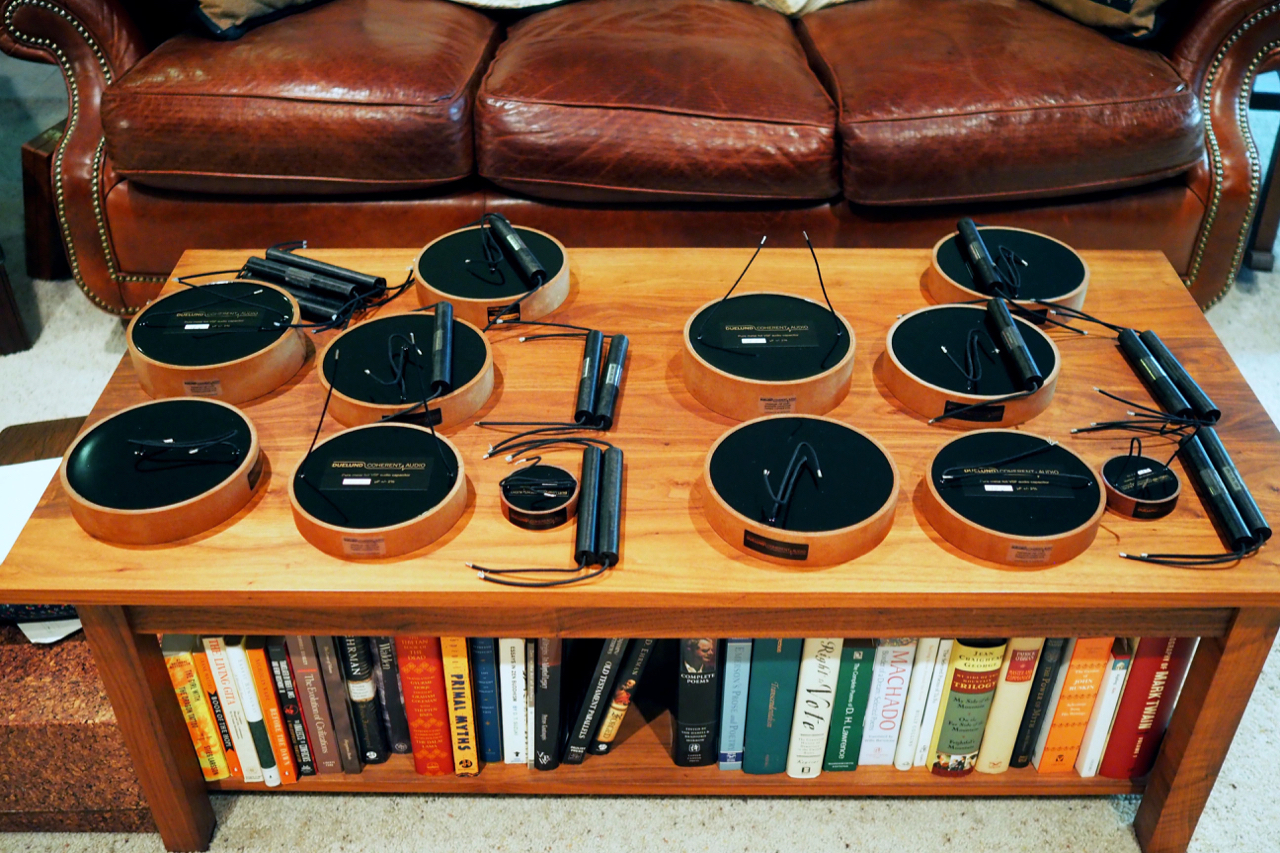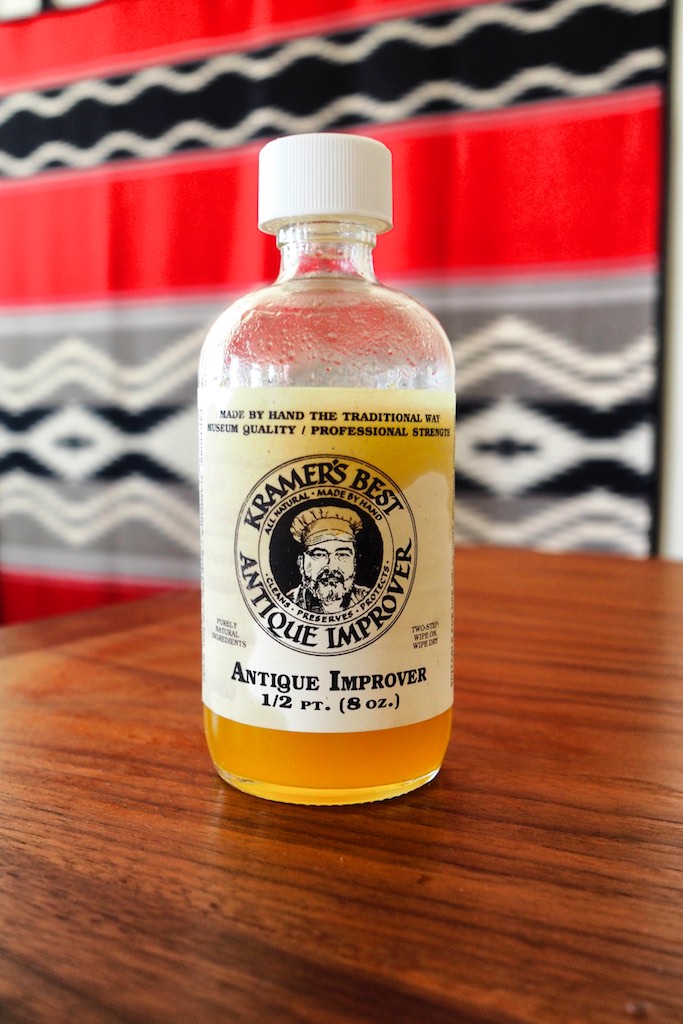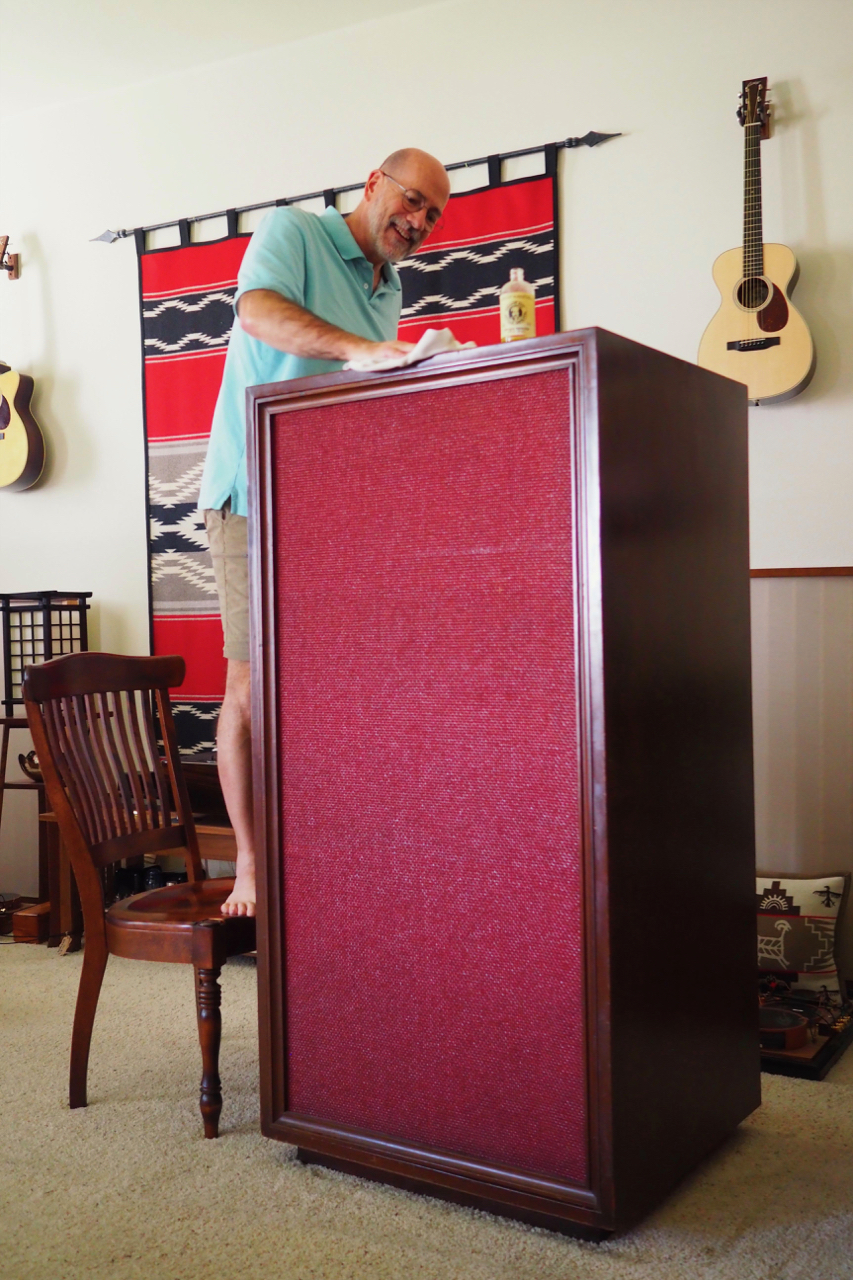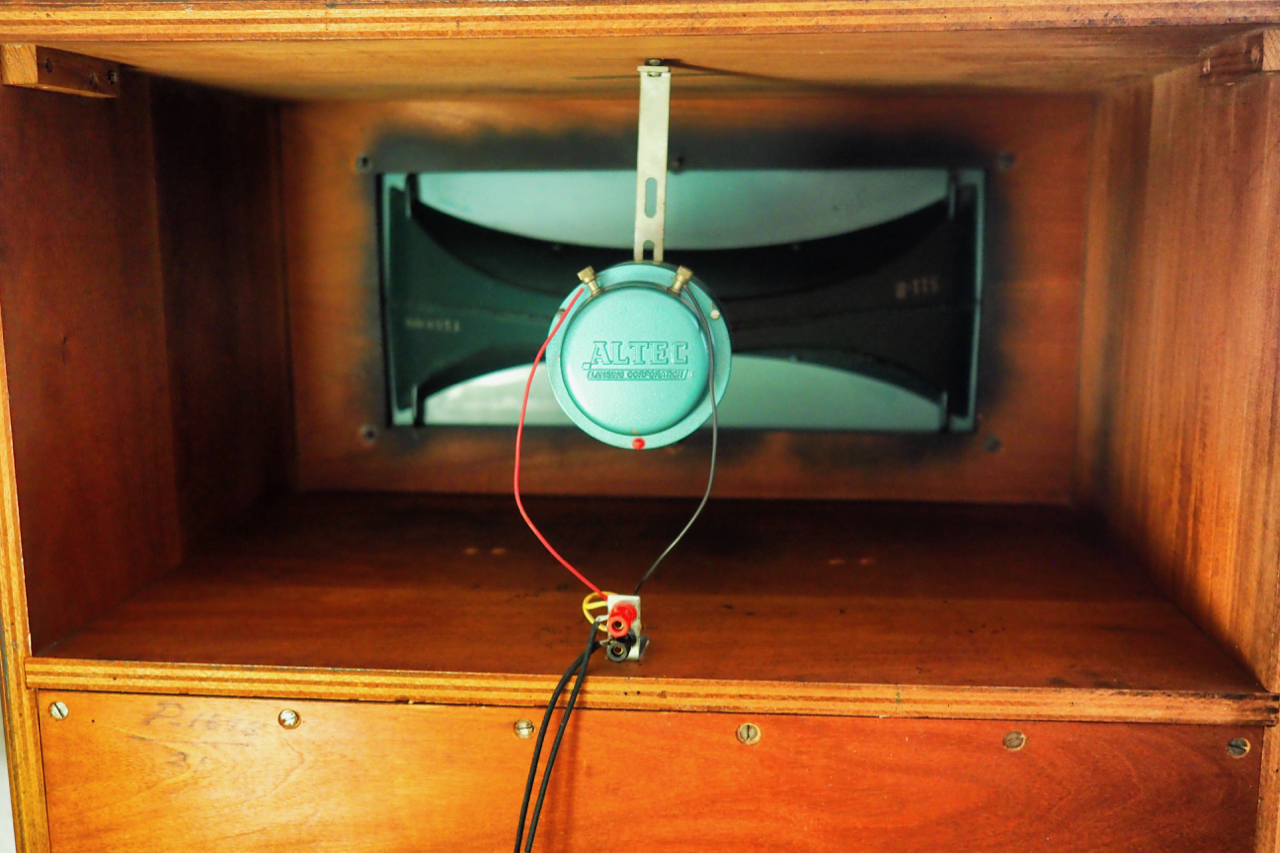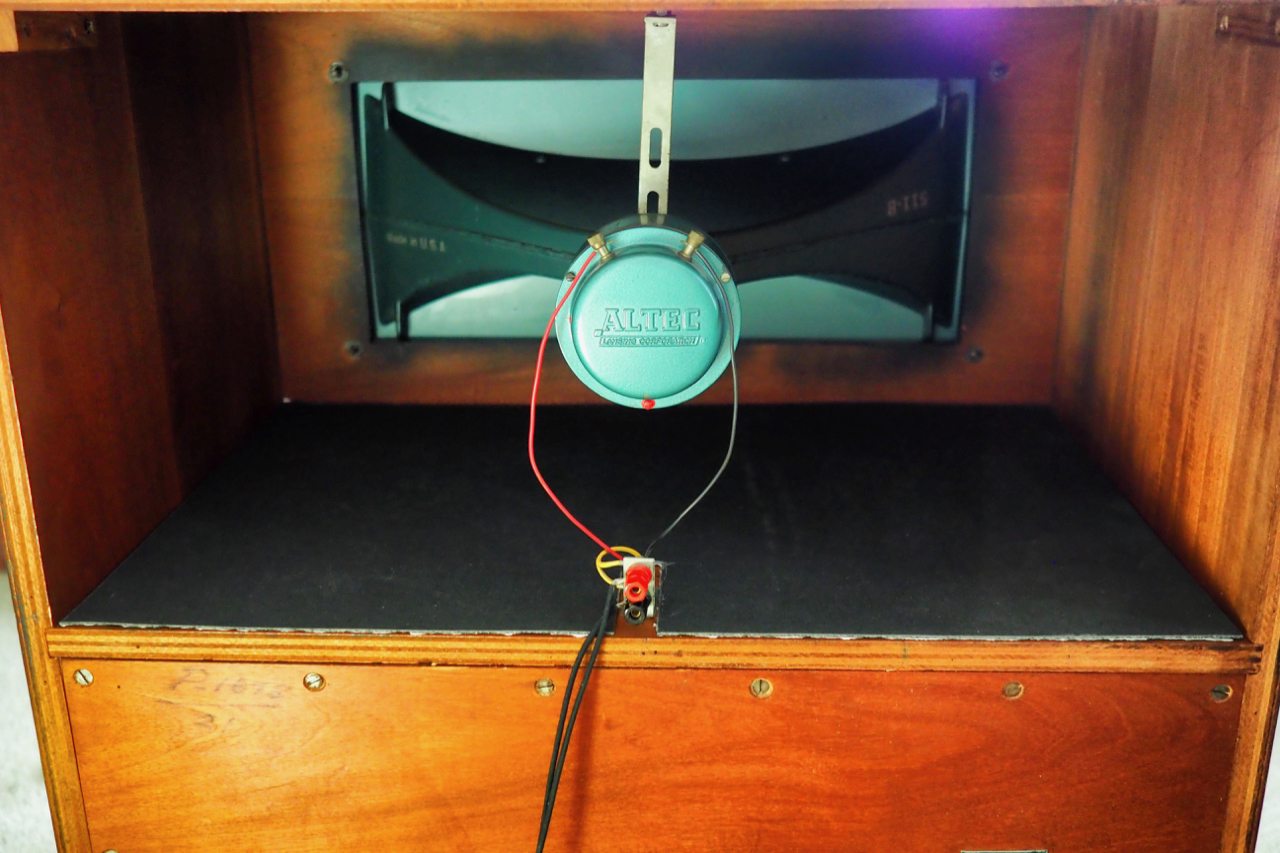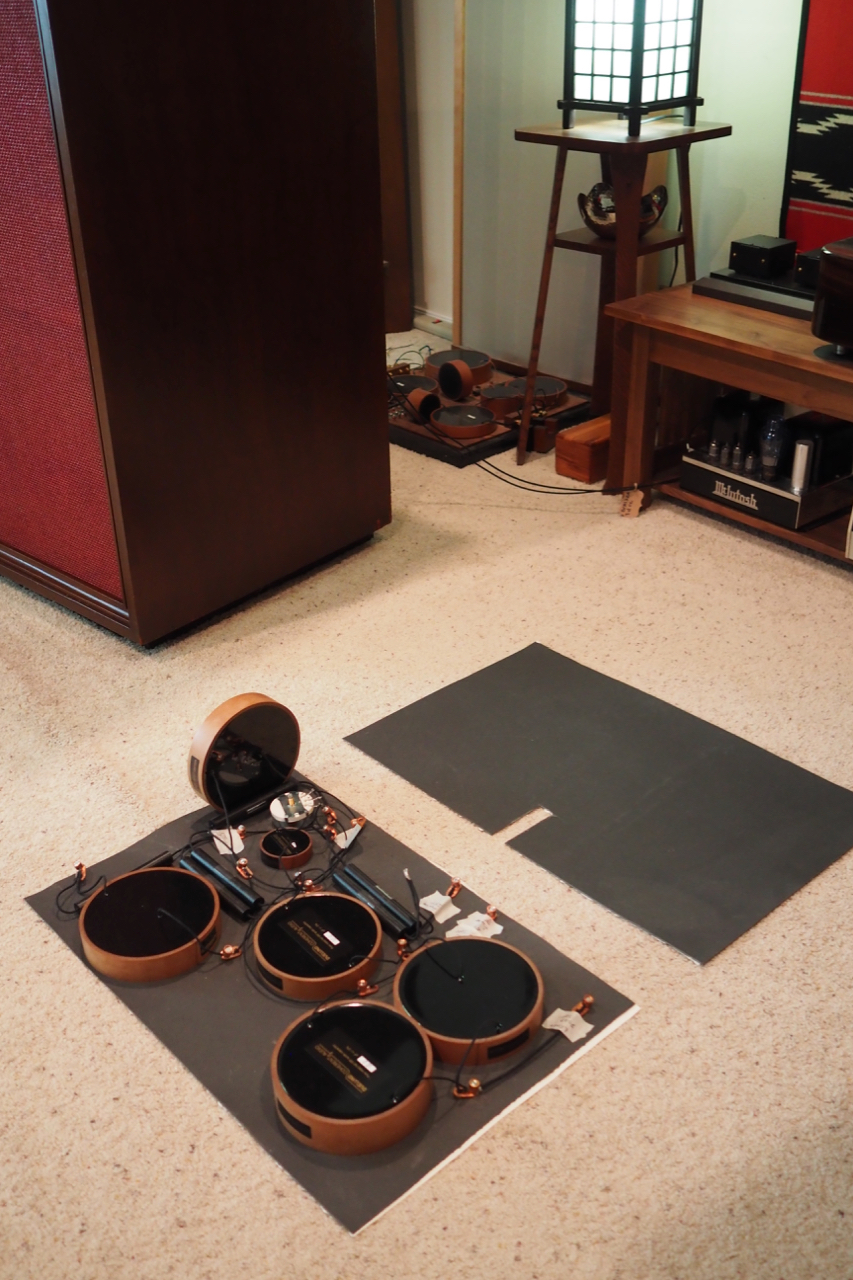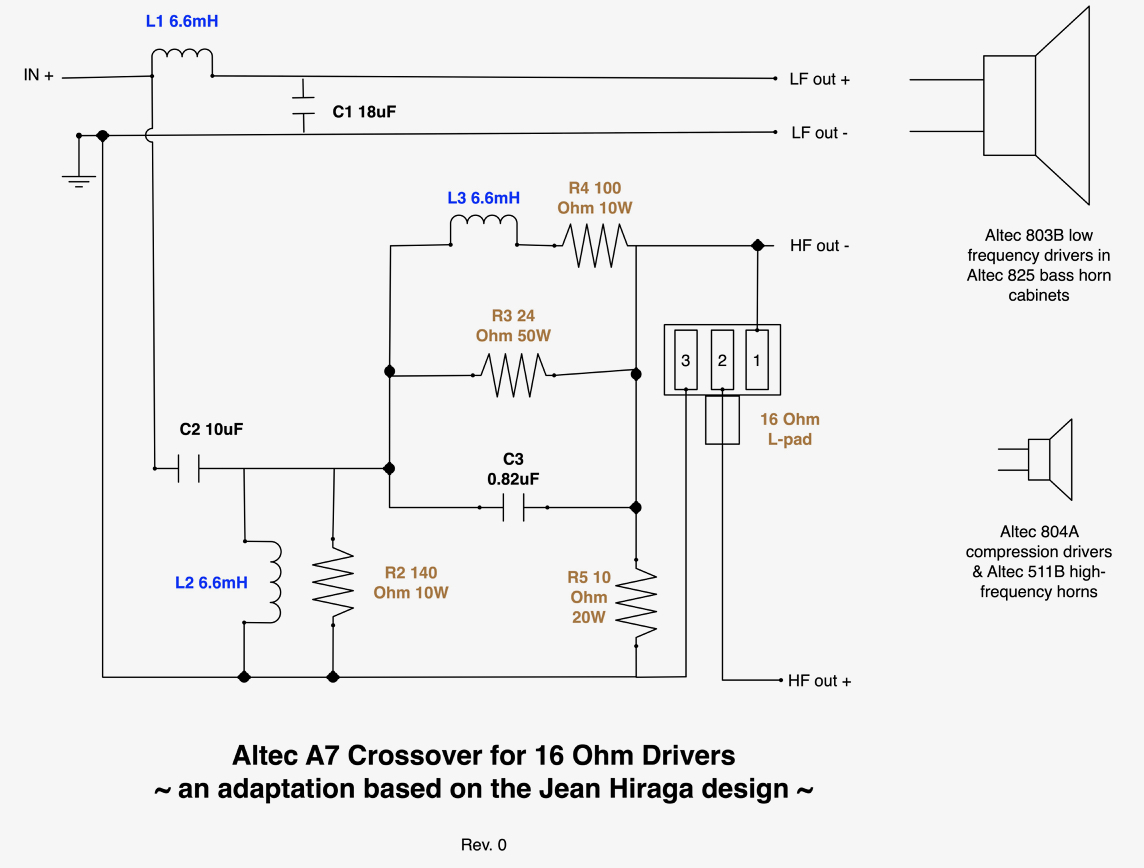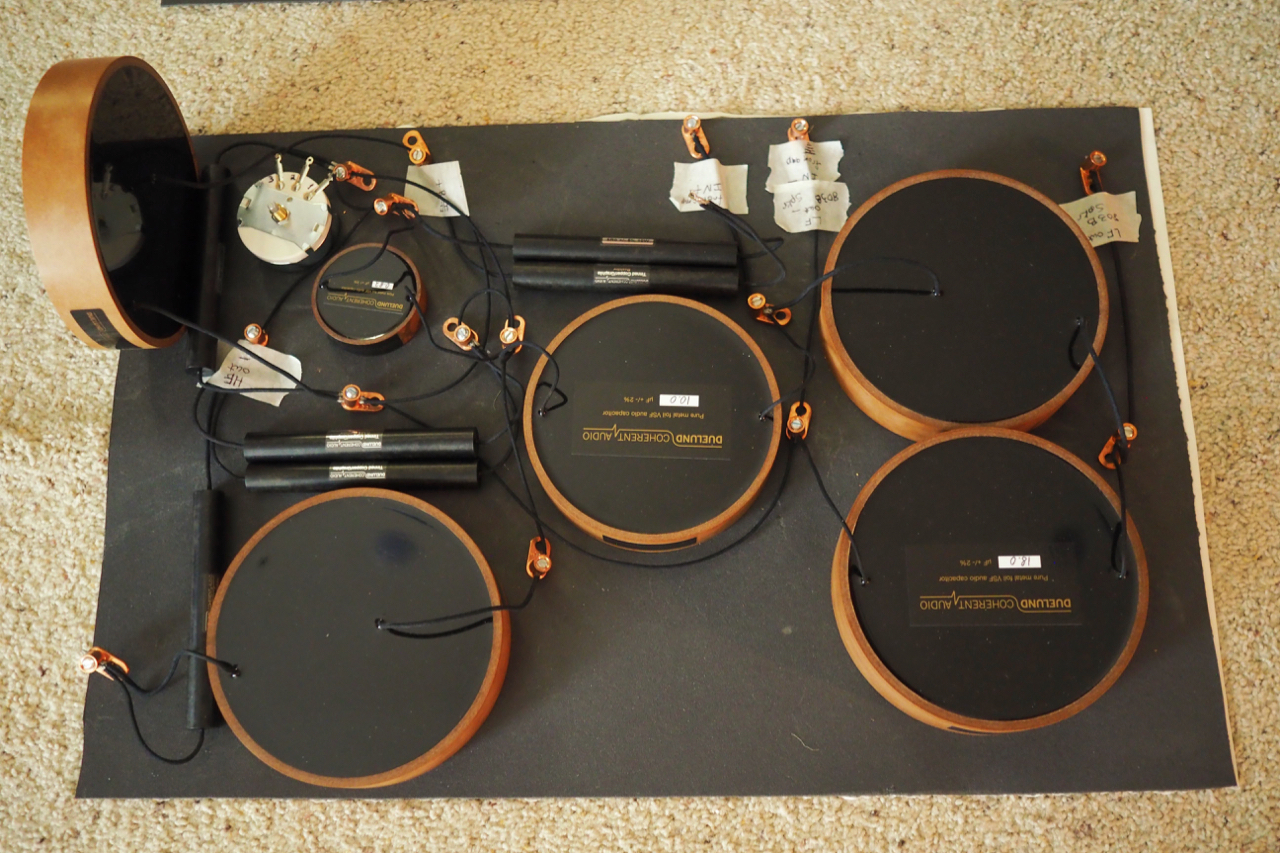Originally I had planned on building external crossovers for the vintage Stokowski Altec's on the beautifully made Hammond HWCHAS Series Heavy Duty Walnut Chassis With Aluminum Top (HERE).
I thought the Hammond's aluminum top plate painted in Altec green like the 511-B horns would make for an attractive nod to Altec tradition.
However, the large size of the Duelund CAST Sn-Cu components meant that even the biggest Hammond chassis available were way too small, and ordering custom ones in the size I would need meant that I would have to place a minimum order of 10-15 chassis, so that option was out.
Couch and coffee table for scale in the photo below.
The more I thought about it, the more I liked the idea of putting the Duelund CAST Sn-Cu crossovers inside the Altec high-frequency 511-B horn cabinet enclosures.
The main benefits of mounting the Duelund CAST Sn-Cu crossovers inside the high-frequency 511-B horn cabinet enclosures are that it would minimize the big Altec's footprint and open up lots more room placement options.
As a side benefit, with the open back of the high-frequency cabinets I can still easily access the Duelund CAST Sn-Cu crossovers for the inevitable tweaking that will take place, while still being able to gaze upon the impressive and beautiful presence of the Duelund CAST Sn-Cu components. Even after all these years I'm still struck with awe by seeing my Westminster's Duelund CAST crossovers!
Over the last couple weekends I did a lot of cleanup work on the cabinets of the Stokowski Altec's with Kramer’s Best Antique Improver (you can buy it through Amazon), which is probably the most effective product there is for taking good care of your vintage (or new) wood cabinets.
The Kramer's is very popular for the cleanup and restoration of antique firearms, so it works its magic on both wood and metal parts too (and lots of other things), like the metal exterior of my Altec horns and drivers, for example.
In the photo below you can see the back of the Altec's before I used the Kramer's for cleanup and conditioning the wood.
You wouldn't believe how much grime and gunk came off the Altec's when I cleaned the exterior of the cabinets. Well over five decades worth to be exact!
The Kramer's really did a nice job of cleaning up the wood on the back of the Altec's too, and I found out after cleaning with the Kramer's that the cabinet backs were actually veneered with a mahogany color veneer that looks similar (but not nearly as refined) as the mahogany that you see on the back and sides of a Martin D-18 guitar, for example.
My photos don't do justice to how much better the Altec's backs look after being treated with the Kramer's, and now they have a nice vintage glow to the wood that is a huge improvement.
Now that the interior of the cabinets were cleaned and conditioned I pondered putting the crossovers into the upper part of the cabinet.
It turns out that the 18 1/4 inches by 28 3/8 inches of space available on the inside bottom of the Altec high-frequency 511-B horn cabinet enclosures provides just enough room for the installing the Duelund CAST Sn-Cu crossovers. Fate!
You might remember my past posts about The Soundcoat Company, who has been providing specialized noise control solutions for aerospace, medical, and industrial applications since 1963.
I decided I wanted to use Soundcoat GPDS damping sheets to line the inside bottom of the high-frequency 511-B horn cabinets to give the Duelund CAST tinned-copper components some extra isolation.
As you would expect, the GPDS is ideal for applications like damping the chassis of audio electronics, so I thought it would be a good match for the Altec's and Duelund CAST Sn-Cu components.
The Soundcoat GPDS damping sheets are about the thickness of cardboard, but are much more dense and stiff. The top of the GPDS sheets have a hard finish, which is the side that the Duelund CAST components will mount to. The underside has a dense viscoelastic polymer material that damps vibration. The underside also has an adhesive covered by a peel-off backing so that I can stick the GPDS to the cabinet surface to secure it.
I cut sections of the Soundcoat GPDS that were 18 inches by 28 1/4 inches to place on the inside bottom of the Altec high-frequency 511-B horn cabinet enclosures, per the photo above.
The GPDS sheet in the photo above is just sitting there with the backing still on it so I could check the fit, the next step would be to remove the backing and stick it to the cabinet surface.
I also cut out a one-inch wide by four-inch deep slot out of the middle front of the GPDS damping sheets to allow for where the N-500D crossover wires pass up through the 825 style bass horn cabinets to connect to the Altec 804A 16-Ohm compression drivers that are mounted on the Altec 511B horns, and those that attach to the binding posts.
It turns out that the Soundcoat GPDS damping sheets are substantial enough to use as breadboards, so I chose to breadboard the Duelund CAST tinned-copper crossovers directly on the damping sheets I had cut out.
I like securing the leads from the Duelund CAST tinned-copper components - and any point-to-point wiring needed - with McMaster-Carr copper set screw lugs for 14-4 wire gauge (6923K62, $2.04 USD each, HERE).
McMaster-Carr copper set screw lugs are my favored way of making crossover connections because of their pure signal path (wire clamped to wire with no solder), and because they make it easy to swap out wire for experimental/voicing purposes.
Figuring out how to best arrange components for crossovers is a little bit like putting the pieces together for a jigsaw puzzle, you just have to use the circuit diagram as your guide, and move the components around until they fit in the best possible arrangement for the space available.
In the photo above you can see the low-frequency part of the crossover located on the right 1/3 of the GPDS damping sheet, the other 2/3 of the crossover on the GDPS damping sheet is made up of the high-frequency part of the crossover.
Ok, now that I have the crossover layout figured out, I can proceed to the next step of installing the Soundcoat GPDS damping sheets and the Duelund CAST Sn-Cu crossover components into the cabinets.
Ok, that's it for now, with much more to come!
As always, thanks for stopping by, and may the tone be with you!




